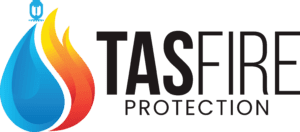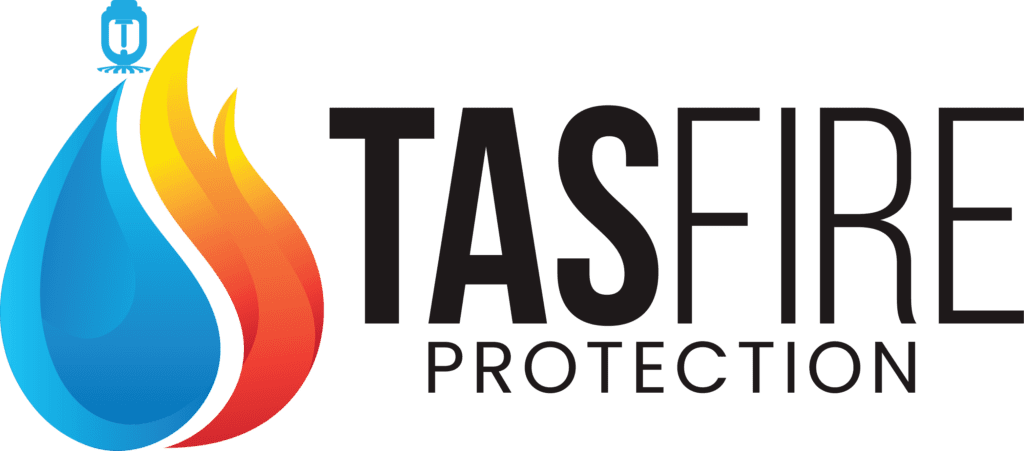The Key Components Checked During a Fire Hydrant Inspection…

Ensuring the reliability of fire hydrants is essential for effective firefighting operations. Fire hydrants serve as a critical link between emergency responders and the water supply needed to combat fires. Regular inspections are vital to ascertain their functionality and readiness. This article will explore the five key components that are typically checked during a fire hydrant inspection, providing a comprehensive overview of the inspection process and its importance.
Visual Inspection
Overview of the Visual Assessment
The visual inspection is the first step in a comprehensive fire hydrant evaluation. This process involves a thorough examination of the hydrant’s exterior to identify any signs of damage or wear. Inspectors look for issues such as rust, dents, and cracks, which can compromise the hydrant’s integrity and functionality.
Accessibility
Accessibility is a crucial factor during the visual inspection. Fire hydrants must be easily reachable by emergency responders. Inspectors check for any obstructions, such as overgrown vegetation, parked vehicles, or debris, that may hinder access. Ensuring that hydrants are clear of obstacles is vital for a swift response in emergencies.
Condition of Components
The condition of various components is assessed during the visual inspection. Inspectors examine the nozzle caps, operating nut, and valve for any signs of corrosion or damage. They also ensure that all parts are secure and functioning correctly, as any malfunction could delay firefighting efforts.
Documentation
After completing the visual inspection, inspectors document their findings. This record-keeping is essential for tracking the condition of hydrants over time and for planning any necessary maintenance or repairs.
Water Flow Testing
Importance of Flow Testing
Water flow testing is a critical component of fire hydrant inspections. This test assesses the hydrant’s ability to deliver water at the required pressure and flow rate during an emergency. The data collected during flow testing is vital for firefighters to understand the available water supply.
Static and Residual Pressure Measurements
During water flow testing, inspectors measure both static and residual pressure. Static pressure refers to the pressure in the system when no water is flowing, while residual pressure is the pressure measured when water is being discharged from the hydrant. These measurements help determine the hydrant’s effectiveness in supplying water.
Flow Rate Assessment
The flow rate is measured in gallons per minute (GPM), indicating the volume of water the hydrant can deliver. Inspectors use specialized equipment, such as pitot gauges, to measure the flow rate accurately. This assessment is crucial for ensuring that the hydrant meets the required standards for firefighting operations.
Data Analysis and Reporting
Once the flow testing is complete, the results are analyzed and documented. This data is essential for maintaining compliance with local fire codes and regulations. Fire departments use this information to update their records and ensure that the hydrants are capable of meeting firefighting demands.
Mechanical Functionality
Checking Operational Components
The mechanical functionality of a fire hydrant is vital for its performance during emergencies. Inspectors examine the operating mechanism, including the valve and seals, to ensure they function correctly. Any malfunction in these components can lead to significant delays in water access during a fire.
Lubrication of Moving Parts
Proper lubrication of moving parts is essential for the smooth operation of fire hydrants. Inspectors check the lubrication of the operating nut and other moving components. Insufficient lubrication can cause parts to seize or become difficult to operate, hindering the hydrant’s effectiveness.
Testing the Main Valve
The main valve is a critical component that controls the flow of water from the hydrant. Inspectors test the valve’s functionality by partially opening the hydrant and observing the water flow. This test ensures that the valve operates smoothly and can be easily opened during emergencies.
Identifying Mechanical Issues
During the mechanical functionality assessment, inspectors look for any signs of wear or damage that could affect the hydrant’s performance. Identifying and addressing these issues promptly is crucial for maintaining the hydrant’s reliability and ensuring it is ready for use when needed.
Structural Integrity
Assessing the Physical Condition
The structural integrity of a fire hydrant is essential for its long-term functionality. Inspectors evaluate the physical condition of the hydrant, looking for signs of corrosion, cracking, or other forms of deterioration. A compromised structure can lead to leaks or failures during operation.
Checking for Leaks
Inspectors conduct leak tests to identify any potential issues with the hydrant’s seals or joints. Leaks can significantly reduce the hydrant’s effectiveness and may lead to water wastage. Detecting leaks early allows for timely repairs and ensures the hydrant remains operational.
Evaluating Drainage
Proper drainage is crucial for preventing water accumulation around the hydrant, which can lead to freezing and damage in colder climates. Inspectors check the drainage holes to ensure they are clear and functioning correctly. This assessment helps maintain the hydrant’s integrity and prolongs its lifespan.
Structural Repairs
If any structural issues are identified during the inspection, inspectors recommend necessary repairs or replacements. Addressing these concerns promptly is vital for ensuring the hydrant’s reliability and compliance with safety standards.
Compliance with Regulations
Understanding Local Regulations
Fire hydrant inspections must comply with various local and national regulations. Inspectors are knowledgeable about the specific requirements set forth by organizations such as the National Fire Protection Association (NFPA) and local fire codes. Adhering to these regulations is crucial for ensuring public safety.
Documentation for Compliance
Proper documentation is essential for demonstrating compliance with inspection regulations. Inspectors maintain detailed records of their findings, including measurements, repairs, and any issues identified during the inspection. This documentation is vital for audits and inspections by local authorities.
Reporting Non-Compliance
If a hydrant is found to be non-compliant during the inspection, inspectors must report the findings to the appropriate authorities. This process ensures that necessary actions are taken to address any issues and maintain public safety.
Regular Updates and Training
Fire hydrant inspectors must stay updated on changes to regulations and best practices. Ongoing training and education are essential for maintaining compliance and ensuring that inspections are conducted effectively.
Community Awareness and Education
Importance of Public Awareness
Community awareness plays a significant role in fire hydrant maintenance. Educating the public about the importance of hydrant accessibility and functionality can lead to better outcomes during emergencies. Residents should be informed about the significance of keeping hydrants clear of obstructions.
Engaging Local Fire Departments
Collaboration with local fire departments is crucial for promoting community awareness. Firefighters can participate in educational programs and outreach initiatives to inform residents about fire hydrants and their importance in firefighting efforts.
Organizing Community Events
Organizing community events, such as fire safety workshops, can help raise awareness about fire hydrants and their maintenance. These events provide opportunities for residents to learn more about fire safety and the role of hydrants in protecting their community.
Encouraging Reporting of Issues
Residents should be encouraged to report any issues they observe with fire hydrants, such as damage or obstructions. Prompt reporting allows for timely inspections and repairs, ensuring that hydrants remain operational and accessible.
Maintenance Best Practices
Establishing a Maintenance Schedule
Regular maintenance is essential for ensuring the reliability of fire hydrants. Establishing a maintenance schedule that includes routine inspections and servicing can help identify potential issues before they become significant problems.
Utilizing Professional Services
Hiring professional services for fire hydrant inspections and maintenance is crucial for ensuring compliance with safety standards. Trained technicians have the expertise and equipment needed to conduct thorough inspections and perform necessary repairs.
Implementing a Record-Keeping System
Maintaining detailed records of inspections, repairs, and maintenance activities is essential for tracking the condition of fire hydrants over time. A record-keeping system allows for better planning and prioritization of maintenance efforts.
Continuous Improvement
Regularly reviewing and updating maintenance practices can lead to improved efficiency and effectiveness. Fire departments and water utilities should continuously seek ways to enhance their inspection and maintenance processes.
The Role of Technology
Utilizing Advanced Inspection Tools
Advancements in technology have led to the development of specialized tools for fire hydrant inspections. These tools, such as digital pressure gauges and flow meters, allow for more accurate measurements and assessments.
Implementing Data Management Systems
Data management systems can streamline the inspection process by allowing inspectors to record and analyze data more efficiently. These systems can help identify trends and patterns in hydrant performance, leading to more informed decision-making.
Enhancing Communication
Technology can enhance communication between fire departments, water utilities, and the community. Real-time reporting systems can facilitate prompt reporting of issues and improve response times for repairs.
Training and Education
Leveraging technology for training and education can help improve the skills of inspectors and maintenance personnel. Online training programs and resources can provide valuable information on best practices and emerging trends in fire hydrant maintenance.
We Provide Fire Hydrant Inspections
Are your fire hydrants now in sound working condition? According to the NFPA 25, fire hydrants should be inspected annually to make certain that this is the case. At TAS Fire Protection, our procedure for inspecting your fire hydrants is created to rigorously scrutinise that your facility’s fire hydrants meet all codes. Contact us for Fire Hydrants Installation, Fire Hydrants Services Company.
> Learn More
Regular fire hydrant inspections are essential for ensuring the reliability and effectiveness of these critical components of a fire protection system. By focusing on key components such as visual assessments, water flow testing, mechanical functionality, structural integrity, and compliance with regulations, fire departments and water utilities can maintain hydrants in optimal condition. Community awareness, maintenance best practices, and advancements in technology further enhance the overall effectiveness of fire hydrant inspections. Ultimately, prioritizing these inspections can save lives and protect property during emergencies.
Contact Us (905-870-7779) for a Free Consultation!
—

About TAS Fire Protection
TAS Fire Protection offers comprehensive and cutting-edge fire protection and security services to commercial, industrial, and high-rise properties. Our team of highly skilled professionals has years of experience in installing, maintaining, and inspecting fire alarm systems, fire sprinkler systems, fire extinguishers, fire hydrants, security alarm systems, and more. We understand that fire safety and security is essential to the protection of lives and property.
> Learn More

